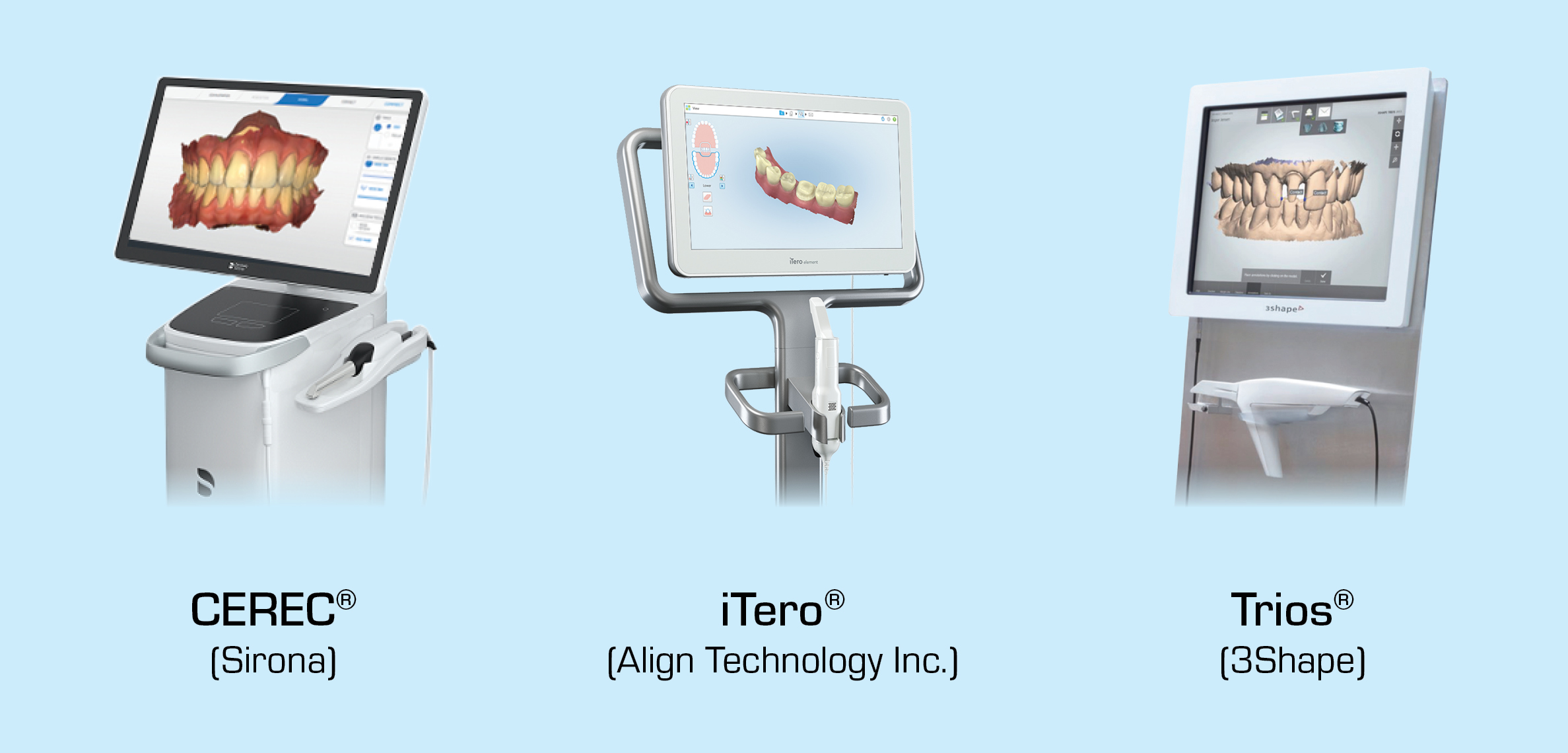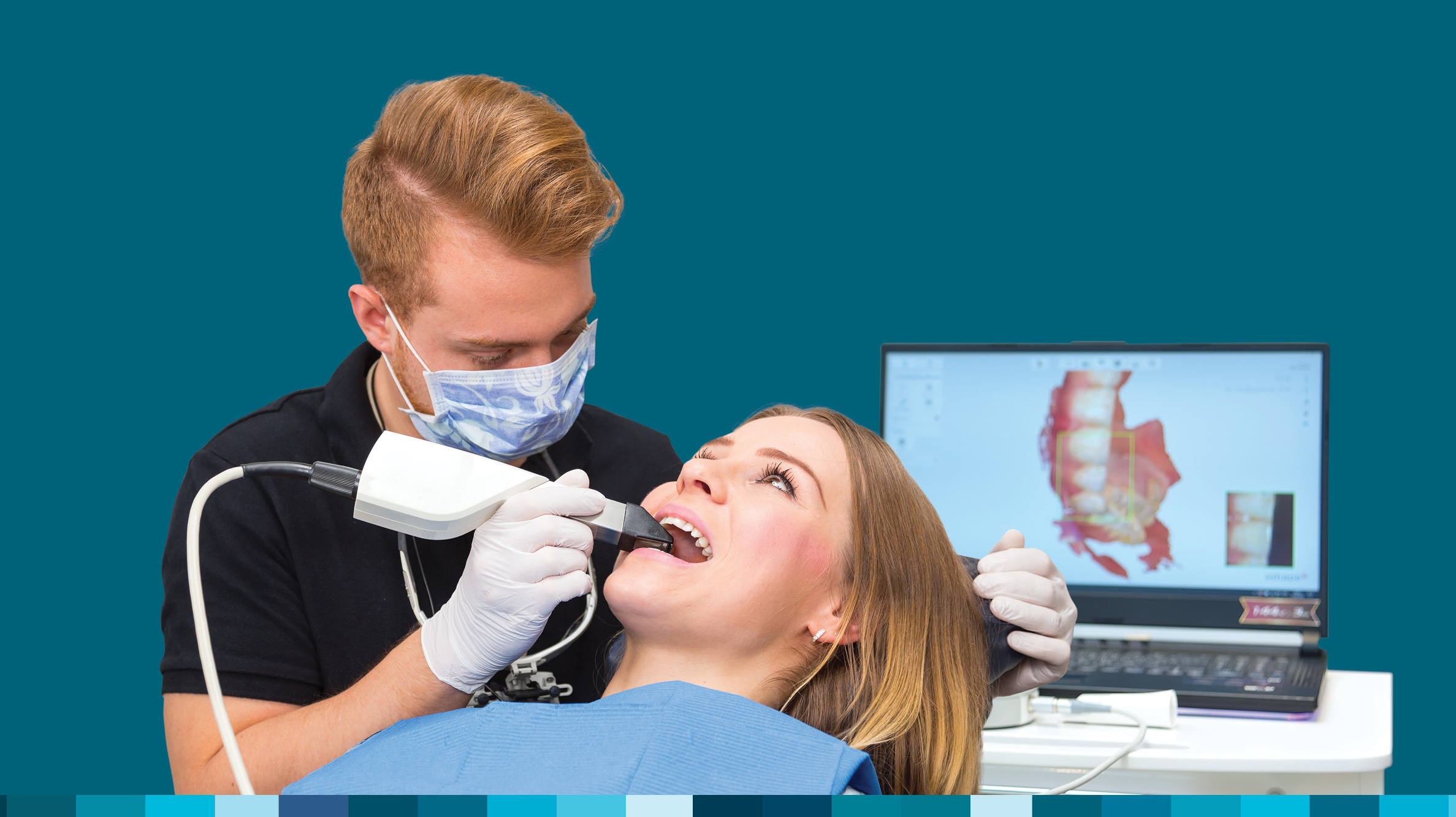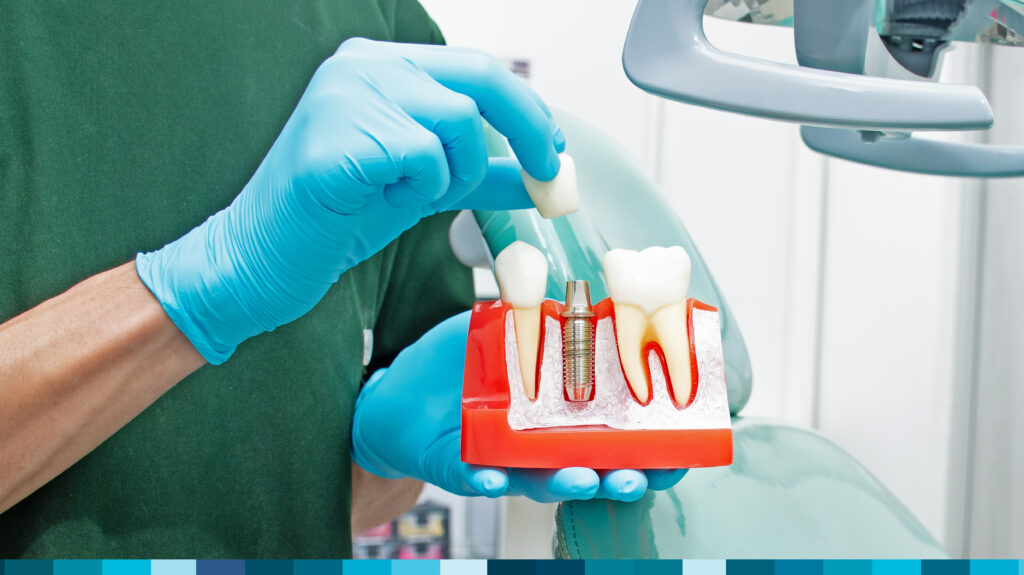As digital dentistry continues to grow, it is important to stay up to date on the latest technology and how it can improve your practice. But it can oftentimes feel overwhelming — leaving you uncertain where to start or how to convert to a digital workflow in the first place. A great place to start would be to adopt technology that is simple to use and immediately beneficial to the day-to-day operations of your practice. For that reason, perhaps the simplest and most direct investment a clinician could make is an intraoral scanner.
Intraoral scanners replace traditional impression-taking methods that use a tray and VPS material. This traditional method is replaced by digital imaging technology that captures an accurate image of the mouth, making the process cleaner and more comfortable for your patient. Scanners capture impressions by projecting a light on the impressions site, using imaging sensors to then convert the image to a digital file.
This may sound complicated, but using an intraoral scanner is easy and offers a wide array of benefits to your practice, including an improved workflow, increased profits and savings, and patient satisfaction. This blog will explore these advantages as well as a few recommended devices to get you started.
Benefits of Intraoral Scanners
1. Improved Workflow
After spending some time practicing with the scanner and learning proper techniques, you will find the accuracy to be comparable to conventional impression-taking methods. And with the constant improvement of digital technology, the accuracy will only get better! Labs like New West utilize advanced artificial intelligence (AI) algorithms to design and mill crowns from impressions submitted by intraoral scanners. With each case, the algorithm learns how to make the next one even more accurate.
Using a scanner also saves clinicians the most important commodity of all: time. Not only does the AI-enhanced design and milling process limit remakes, saving time between the lab and clinician, it also saves the clinician time chairside as a full scan can be captured in just a few minutes.
Because impressions taken with a scanner are instantly digitized, you can view and evaluate the quality of the scan right away before sending it to the lab. And unlike submitting traditional impressions that need to be shipped — thus delaying any knowledge of an unusable impression — an intraoral scanner gives you the ability to correct any issues with the impression and take additional scans if needed, all in the same appointment.
Additionally, because scans are archived, it is much easier to request remakes of crowns or other devices without needing to make an additional appointment with your patient. You can have access to all of your patients’ models without worrying about stone models and where to store them.

*Remake data based on BruxZir model-free single posterior crowns manufactured digitally from Jan. 1, 2022, to Feb. 28, 2022. Occlusion data based on BruxZir case evaluations returned to the lab from Aug. 1, 2021, to March 31, 2022.
2. Profit Increase
When purchasing a scanner, the first question you may ask yourself is when you’ll start to see your return on investment (ROI). The truth is, you will start experiencing savings on your very first digital case.
Not only will you start to save money on impression material, bite registration material and impression trays, but you will also save money on hidden fees like shipping and packing supplies.
Labs like New West also offer special incentives for those who submit impressions via intraoral scanner. Clinicians who use New West can save on the $9 shipping fee, since impressions are digitally transmitted. Plus, $20 will be discounted for every all-ceramic model-less restoration unit and $40 will be discounted on each custom abutment and screw-retained implant crown unit. Meaning, for every single-crown case, you can potentially save $29 each time.
To put that into perspective, after just a month of sending approximately four units of BruxZir® Solid Zirconia per week, you will look to save approximately $464, which can be reinvested into your practice for a greater customer experience.
3. Patient Satisfaction
Last, but certainly not least, investing in an intraoral scanner also has a positive effect on your patients.
No patient likes to sit in the chair, gagging on the impression material and bite tray, counting the minutes until the impression is over – let alone having to do the whole process over again if the first impression came out wrong.
Using an intraoral scanner is faster and cleaner than a traditional impression-taking technique. By offering this service, you can keep your patients happier and increase treatment acceptance rates, which may lead to increase referrals and better reviews.
Seeing the scans live on the screen is also beneficial for the patient. Patients can see what you see, giving you a great tool for communicating with them about their oral health and the proposed treatment plan.
Popular Scanners
Now that you know why intraoral scanners are beneficial to your practice, here are a few scanner options to help get you started on your decision.

iTero Element®
Released by Align Technology, the iTero Element series of scanners is a large, highly advanced option. It is perfect for Invisalign® and orthodontic treatments. The scanner also offers technology to accurately detect caries.
CEREC Primescan
Manufactured by Dentsply Sirona, the CEREC Primescan is perhaps the fastest scanner on the market with exceptional AI that makes it smooth and efficient.
TRIOS®
3Shape’s TRIOS series contains fast scanners that are perfect for sending cases to lab. Newer models even have a wireless scanning wand for ultimate maneuverability.
Conclusion
Intraoral scanners are a powerful tool for any clinician. They make workflows smoother, lessen remake rates, save time and increase profits. For any clinician looking to grow their practice and try something new, an intraoral scanner is the perfect device to achieve just that.





